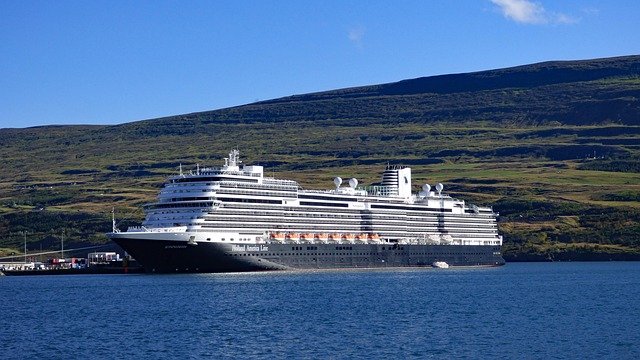Why More Travelers Are Choosing Small Ship Cruises in Alaska
Small ship cruises in Alaska are gaining popularity among nature lovers and explorers. These vessels allow guests to experience the state’s untamed beauty up close—from quiet bays to wildlife-rich fjords. Discover what makes these journeys stand out in a sea of options.

What Makes Small Ship Alaska Cruises Stand Out
Small ship Alaska cruises distinguish themselves through their ability to navigate narrow fjords, shallow bays, and protected waterways that remain inaccessible to massive ocean liners. These vessels allow guests to experience the state’s untamed beauty up close, often anchoring in secluded coves where wildlife viewing opportunities abound. Unlike their larger counterparts, small ships can adjust their itineraries based on weather conditions and wildlife sightings, creating spontaneous moments that become lasting memories.
The onboard atmosphere differs significantly from traditional cruise experiences. Passengers quickly become familiar with fellow travelers and crew members, fostering a sense of community that enhances the adventure. Expert naturalists and local guides accompany these journeys, providing in-depth knowledge about Alaska’s ecosystems, indigenous cultures, and geological formations that shaped the region over millennia.
Why These Journeys Appeal to Nature Enthusiasts
Alaska’s wilderness demands respect and careful observation, qualities that small ship cruises naturally encourage. Passengers spend more time on deck observing humpback whales, orcas, sea otters, and harbor seals in their natural habitats. The smaller passenger count means everyone has unobstructed views during wildlife encounters, eliminating the crowding common on larger vessels.
Many small ship operators focus exclusively on natural history and cultural education, attracting travelers who prioritize learning over entertainment. Daily activities include guided nature walks, kayaking excursions, and zodiac landings on remote beaches where brown bears fish for salmon and bald eagles soar overhead. Photography enthusiasts particularly appreciate the freedom to move around the vessel without navigating through hundreds of other passengers.
Accessing Remote Wilderness Areas
The true advantage of small ship cruising becomes apparent when vessels venture into places like Glacier Bay National Park, Misty Fjords National Monument, and the inside passages of Southeast Alaska. These protected waters showcase towering glaciers, cascading waterfalls, and pristine forests that have remained unchanged for centuries.
Small ships can approach tidewater glaciers closely enough for passengers to hear the thunderous crack of calving ice. They navigate through narrow straits where steep mountains rise directly from the water, creating cathedral-like environments that inspire awe and reflection. Many itineraries include stops at small coastal communities like Petersburg, Wrangell, and Haines, where passengers can interact with local residents and learn about traditional subsistence lifestyles.
Enhanced Wildlife Viewing Opportunities
Alaska’s marine ecosystems support incredible biodiversity, and small ships provide optimal platforms for wildlife observation. Experienced captains know where to find feeding whales, sea lion rookeries, and seasonal bird migrations. The quieter engines and smaller profile of these vessels cause less disturbance to marine life, often resulting in closer encounters and more natural animal behavior.
Passengers frequently witness behaviors rarely seen from larger ships, such as whales bubble-net feeding, sea otters using tools to crack open shellfish, and massive Steller sea lions hauling out on rocky shores. Many small ship operators employ hydrophones to listen for whale calls, adding an auditory dimension to wildlife experiences that creates deeper connections with Alaska’s marine environment.
| Cruise Line | Ship Capacity | Average Cost Per Person (7 Days) |
|---|---|---|
| UnCruise Adventures | 22-88 passengers | $4,000-$8,000 |
| Lindblad Expeditions | 62-148 passengers | $5,500-$12,000 |
| Alaskan Dream Cruises | 40-74 passengers | $2,500-$6,000 |
| American Cruise Lines | 100-175 passengers | $4,500-$9,500 |
Prices, rates, or cost estimates mentioned in this article are based on the latest available information but may change over time. Independent research is advised before making financial decisions.
The Growing Appeal Among Discerning Travelers
Modern travelers increasingly value authentic experiences over mass-market tourism, driving demand for small ship Alaska cruises. These journeys attract passengers who prioritize environmental responsibility, cultural sensitivity, and educational value over traditional cruise amenities like casinos, shopping centers, and large-scale entertainment.
The demographic tends to include active adults, photographers, naturalists, and families seeking meaningful travel experiences. Many passengers become repeat customers, returning to explore different regions of Alaska or traveling during various seasons to witness changing natural phenomena. The personal relationships formed with crew members and fellow passengers often extend beyond the cruise itself.
Seasonal Advantages and Flexibility
Small ship operators can extend their seasons earlier into spring and later into fall, taking advantage of Alaska’s extended daylight hours and varied seasonal highlights. Early season cruises offer opportunities to witness massive ice formations and spring wildlife activity, while late-season journeys showcase autumn colors and different migration patterns.
The flexibility inherent in small ship operations allows captains to modify routes based on weather, wildlife sightings, or passenger interests. This adaptability often leads to unexpected discoveries and unique experiences that cannot be replicated on rigid, predetermined itineraries followed by larger vessels.
Small ship cruises in Alaska represent a growing segment of the travel industry that prioritizes quality over quantity, authentic experiences over manufactured entertainment, and environmental stewardship over mass consumption. As more travelers seek meaningful connections with nature and local cultures, these intimate vessels continue to provide unparalleled access to one of North America’s last great wilderness areas, creating memories that extend far beyond the duration of the journey itself.




